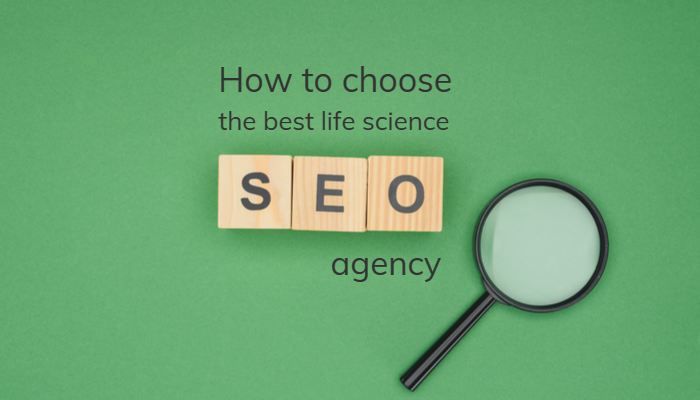Inspired by the upcoming ‘life science trade show season’ about to kick off in earnest this Autumn, we thought we’d put together our top tips for ensuring you get the most value out of the conferences you attend.
Before making your plan of attack, first you need to come up with a list of life science conferences that will be useful for you to attend. It is crucial that you keep your target audience fully aware of your brand, update existing clients about your great products and new launches, and of course generate interest from new leads – not letting your competitors steal the show! The following questions should always be top of mind at this time:
- According to which criteria will you select and prioritise the conferences, exhibitions and trade shows to sponsor and attend?
- What does your budget allow for and how do you maximise booth space and material cost?
- Have you planned for a pre-show campaign to make attendees aware of your presence at the exhibition and for a post-show campaign to follow up on clients and visitors to your booth?
- What method will you use on site to pick up new leads and make sure you retain their precious contact details?
- How will you measure your return on investment? By which criteria will you decide whether or not to go back the following year?
Step 1: Event selection
To select conferences that are relevant to your business, we suggest you prepare a list of all published events including information on their level of relevance (research interest and topic, targeted audience, industry type), number of participants, cost and sponsorship package (inclusions, booth size, access to attendee list, presentation guidelines). With this information, it becomes much easier to prioritise shows to decipher those you must attend, and those that might be good to keep on the back burner.
Step 2: Exhibition booth layout and material planning
It’s a good idea to have a discussion with the show organisers before booking a booth space to ensure you secure a good location. A conference may have 20,000 participants, but if your stand is in a hidden corner of the room, perhaps only 10 of those will actually visit.
The layout and appearance of an exhibition stand are just as important as the product literature on display. The space should attract visitors, and it’s a good idea to set up a sitting-area where they can interact with you and easily fill contact forms.
An iPad is a convenient tool for undertaking such interactive activities, as it allows you to quickly access the data after the show. And of course, don’t forget to bring a prize for visitors – everyone loves a bit of competition, and who knows, it might be just what attracts a visitor to your booth. But don’t worry, your prize doesn’t need to be expensive: my most successful prize was a giant plush macrophage, which both female and male scientists thought was great and wanted to take home (and they only cost £10 each to purchase!).
Step 3: Pre-show email
Now that you have committed yourself to exhibit and have allocated an extensive part of your budget to host an attractive stand, how do you ensure you get the conference attendees to visit it?
Our first suggestion is to make sure that you let participants know you will be there. Let people know what they will find at your stand, why it’s interesting and how it will be useful to their work. After all, you understand their challenges and pain points, so emphasise how you can help them achieve their goals.
A pre-show email is often forgotten but helps get more visitors to your stand, and can also provide a useful metric to measure show success. Such an email can simply say, “We will be exhibiting at XYZ next Wednesday; come and visit us”, but it helps to have a little incentive (freebies, prize draw, discount, etc) or to announce a new product or specific offer with relevance to the conference topic. If the attendee list is not provided before the conference, you can always select customers and leads in your database that are likely to attend by segmenting them based on industry or location. After all, ideally your database should be well segmented so you can ensure you are always personalising the messages and content you send to your prospects.
 Image: Rawpixel/Shutterstock.com
Image: Rawpixel/Shutterstock.com
Step 4: Post-show email
Hooray! You’ve had a great show and collected a number of leads, as well as noted any questions or comments from people that stopped by your booth. Now comes the most important phase of your conference planning agenda: you must carefully follow up with all the people you talked to (except the concierge!), enter all existing clients and new prospects into your CRM database and make sure you send them a thank you email accompanied by a relevant offer. Offers will be show-specific, but might include educational content or a product-focussed promotion such as a discount code. Using a tool such as Sidekick or HubSpot will allow you to track the leads that click on one of your links (giving a clear indicator as to who you should follow up with via phone!).
Step 5: Assessing return on investment
A quantitative, direct measure of ROI is often challenging for exhibitions. However, you should be able to perform a semi-quantitative measure of ROI by setting goals and tracking success for factors such as the number of booth visitors, prize draw participants, new leads obtained, visitors to your website or promotion page following your post-show email.
Further down the line, you may be able to use the same list of attendees for new campaigns, promotions or offers, and of course for your pre-show email of the same event the following year, should your ROI analysis demonstrate that your attendance was worthwhile.
Metrics related to customers/prospects are not the only way to measure the ROI of attending a life science event or exhibition. After all, shows are a perfect place to capture market intel, find out what competitors are up to and obtain direct feedback from customers and prospects on the good (and bad) things about your products and services. This type of market research is often priceless and can help you gain unique customer insight.
So there’s our game plan for planning your next show. As with all things in life, you can’t prepare for everything. When show-day rolls around, engage and interact with as many people as possible – you never know who you might meet or what opportunities might arise!




